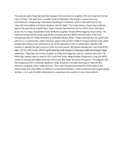Marker-assisted introgression improves Striga resistance in an Eritrean Farmer-Preferred Sorghum Variety

View/
Date
2015-03Author
Tadesse, Yohannes
Abraha, Tesfamichael
Kiambi, Dan
Folkertsma, Rolf
Hash, C Tom
Ngugi, Kahiu
Mutitu, Eunice
Abraha, Negusse
Weldetsion, Mussie
Mugoya, Charles
Masiga, Clet W
de Villiers, Santie
Language
enMetadata
Show full item recordAbstract
The parasitic weed Striga hermonthica hampers the production of sorghum, the most important cereal crop in Eritrea. This weed has a complex mode of infestation that adapts to many hosts and environments, complicating conventional breeding for resistance, which is the only form of crop improvement available to Eritrean breeders, but has failed. This study aimed at improving resistance against this parasite by transferring 5 Striga resistant Quantitative Trait Loci (QTLs) from resistance donor N13 to Striga susceptible Farmer-Preferred Sorghum Variety (FPSV) Hugurtay from Eritrea. The method involved backcrossing using marker-assisted selection (MAS) and evaluation of the best introgressed lines for Striga resistance in artificially infested fields. Foreground selection was performed with up to 11 polymorphic simple sequence repeat (SSR) markers linked to Striga resistance QTLs, while background selection was conducted in the BC3F2 generation with 27 polymorphic unlinked SSR markers to identify the best recovery of the recurrent parent (RP) genetic background. Out of 84 BC3F3 lines, L2P3-B, L1P5-A and L2P5P35 performed best with respect to both grain yield and reduced Striga infestation. These lines were more resistant to Striga than Hugurtay, but less resistant than N13. The three lines yielded twice as much as N13, with Area Under Striga Number Progression Curve (AUSNPC) values on average 18% higher than that of N13 and 38% lower than that of Hugurtay. This suggests that the introgressed QTLs conferred significant Striga resistance and yield advantage to these BC3F3 backcross progenies under Striga pressure. These lines have good potential for future release and demonstrate that when MAS is available to conventional breeders, even in countries with no genotyping facilities, it is a useful tool for enhancement, expediency and precision in crop improvement.
URI
http://www.sciencedirect.com/science/article/pii/S0378429014003414http://hdl.handle.net/11295/81580
Citation
Field Crops Research Volume 173, 1 March 2015, Pages 22–29Publisher
University of Nairobi
